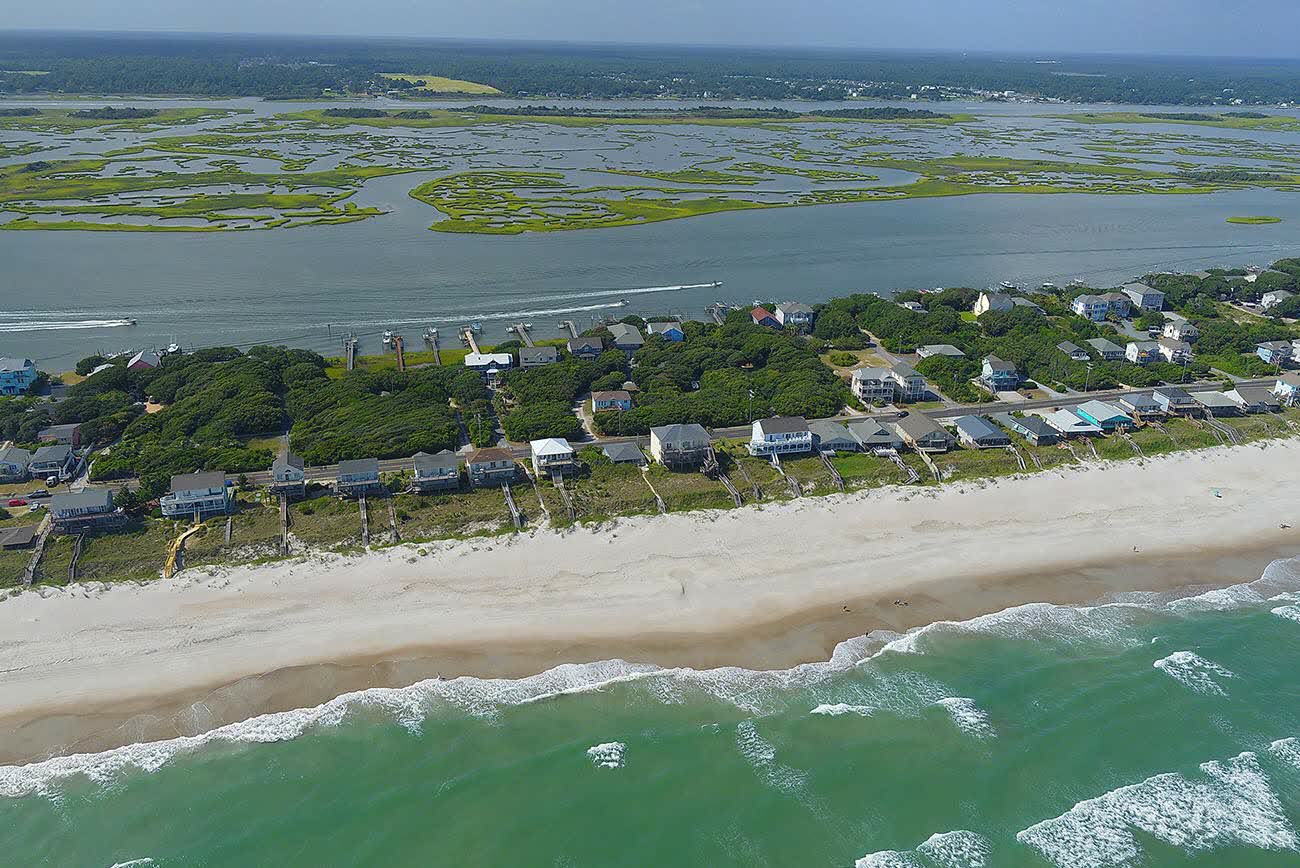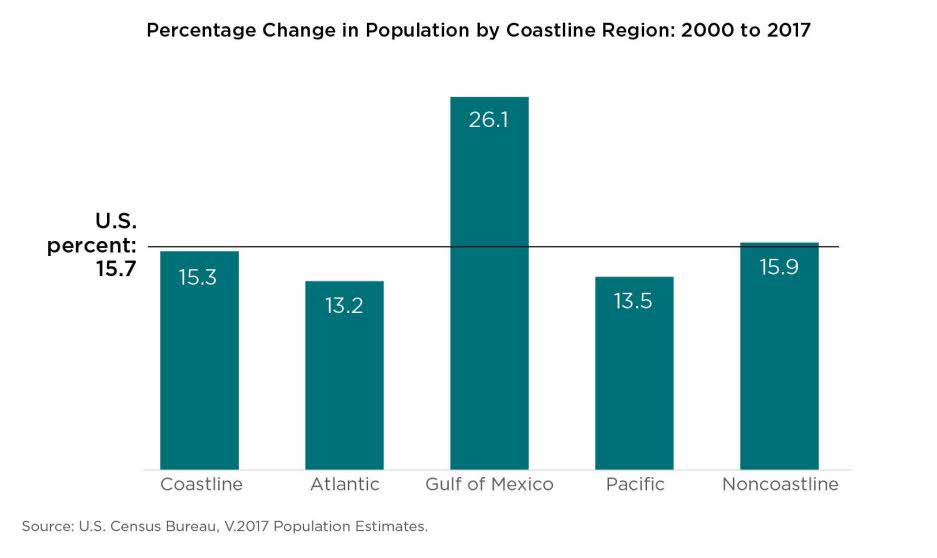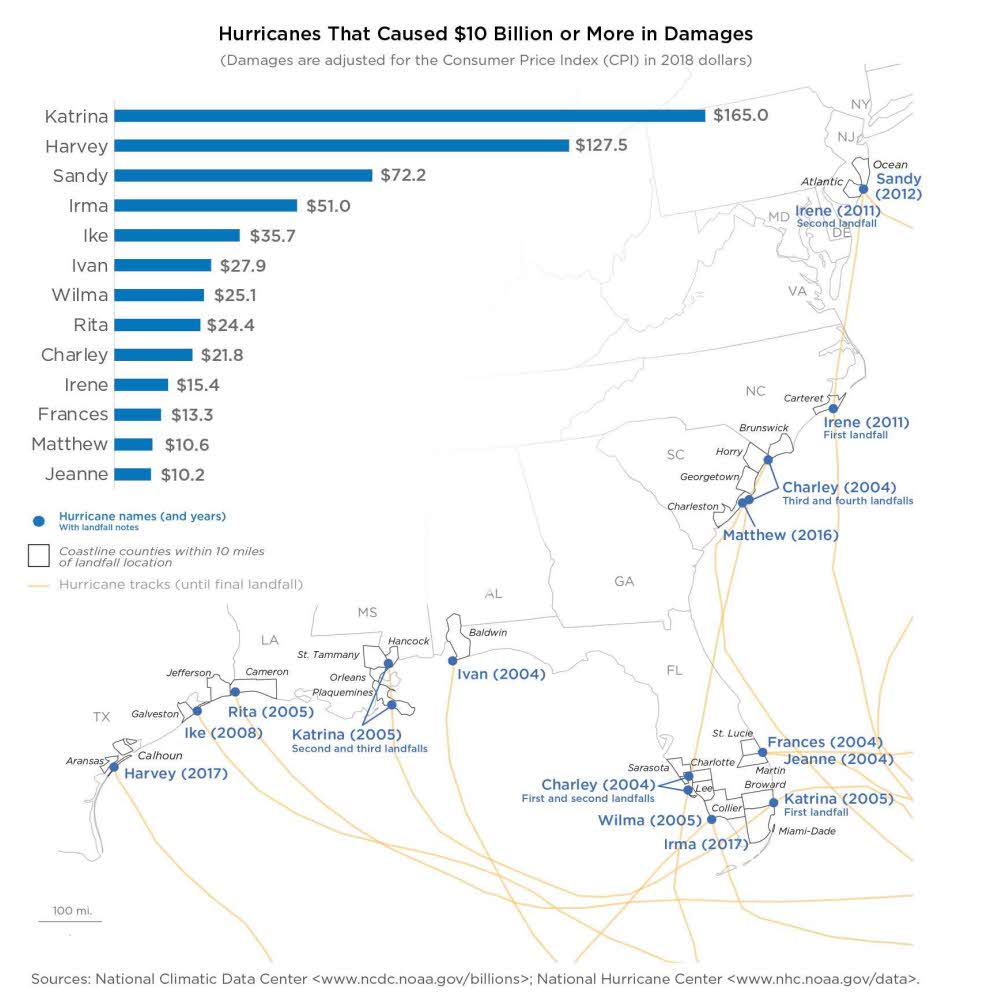About 60.2M Live in Areas Most Vulnerable to Hurricanes
The 2019 hurricane season has begun and, once again, the number of people living in some of the most vulnerable coastline regions is growing.
About 94.7 million people, or about 29.1% of the total U.S. population, lived in coastline counties in 2017, a 15.3% growth since 2000.
The first hurricane of the season, Barry, made landfall Saturday in Louisiana as a Category 1 and was later downgraded to a tropical storm, causing widespread flooding and power outages along the Gulf Coast.
There were 13 hurricanes that caused more than $10 billion in damage each in the Atlantic and Gulf of Mexico regions between 2000 and 2017.
Coastline counties — those adjacent to coastal water or territorial sea — are grouped into the Atlantic, Gulf of Mexico and Pacific regions.
About 60.2 million people lived in the Atlantic and Gulf of Mexico regions — those most vulnerable to hurricanes. These areas added 8.3 million people between 2000 and 2017, a 16% increase.
A closer look at areas in the path of hurricanes:
- The Gulf of Mexico was the fastest growing of the coastline regions. It added more than 3 million people between 2000 and 2017, a 26.1% increase. The nation as a whole grew by 15.7% over the same period.
- The Gulf of Mexico’s high rate of population growth was reflected in the percentage of its workforce employed in construction industries: 8.5%, compared to 6.4% nationally. Employment in natural resources, construction and maintenance occupations was also higher than the national rate: 10.8% compared to 8.9%.
- Coastline counties continued to be more ethnically diverse than other counties. While non-Hispanic whites made up 60.7% of the U.S. population in 2017, they accounted for less than half of the population (47.9%) in coastline counties.
- There were 13 hurricanes that caused more than $10 billion in damage each in the Atlantic and Gulf of Mexico regions between 2000 and 2017. Seven occurred in just two years (2004 and 2005). While the population in these areas remained at about 54.5 million between 2005 and 2006, their aggregate population has continued to grow every year since.
Visit Our Infographic
Related Statistics
Subscribe
Our email newsletter is sent out on the day we publish a story. Get an alert directly in your inbox to read, share and blog about our newest stories.
Contact our Public Information Office for media inquiries or interviews.
-
PopulationMoves to and From the South and West Dominate Recent Migration FlowsApril 29, 2019Domestic migration flows in the South and West are highlighted in three recent migration data releases.
-
PopulationJumping Into Action When Disaster StrikesNovember 13, 2018The Census Bureau’s Emergency Preparedness and Response Team coordinates and disseminates demographic and economic data to emergency managers and the public.
-
PopulationKnowing Who Lives Where Is Key to RecoveryAugust 27, 2018Disaster recovery efforts rely on Census Bureau data to tailor relief for affected homes and businesses. Emergency planners use the data to plan for the worst.
-
EmploymentThe Stories Behind Census Numbers in 2025December 22, 2025A year-end review of America Counts stories on everything from families and housing to business and income.
-
Families and Living ArrangementsMore First-Time Moms Live With an Unmarried PartnerDecember 16, 2025About a quarter of all first-time mothers were cohabiting at the time of childbirth in the early 2020s. College-educated moms were more likely to be married.
-
Business and EconomyState Governments Parlay Sports Betting Into Tax WindfallDecember 10, 2025Total state-level sports betting tax revenues has increased 382% since the third quarter of 2021, when data collection began.
-
EmploymentU.S. Workforce is Aging, Especially in Some FirmsDecember 02, 2025Firms in sectors like utilities and manufacturing and states like Maine are more likely to have a high share of workers over age 55.







